As you may know, between January 14 and February 18 I have been away from home on a research expedition to Antarctica. Several people have asked me for a post detailing my experiences, and I was also thinking to write at least something about the trip. I could spend pages talking about the amazing landscapes and fauna, or daily life in Antarctica. However, in keeping with the spirit of this blog, I will concentrate on the radio related aspects of the trip (and there are indeed enough to tell a story). If I see that there is much interest in other topics, I might be persuaded to run a Q&A post or something similar.
Apparently, my trip and my posts in Twitter raised the attention of a few Hungarian Amateurs, who even discussed and followed my adventures in their Google group. Thanks to Janos Tolgyesi HG5APZ for his interest and for some good discussion over email during my voyage.
The trip was part of a project at my company, GMV. I don’t want to give out much details about it, but at least I think I should say something. We were on-board the BIO Hespérides ship during part of its Antarctic campaign this year. Briefly speaking, the goal of the project was to record GNSS signals with user terminal on ground and send the recording for processing to a server installed in the ship. We used LTE to send the data, so a full eNodeB was installed on the ship, and we used a small LTE modem on the terminal. The recordings of GNSS signals were done with an Ettus Research USRP B205mini. To coordinate the activities of the members of the team we used TETRA. We had a TETRA base station installed on the Hespérides, and we carried TETRA handhelds.
For LTE, we used band 28, with a downlink at 760-780MHz and an uplink at 705-725MHz. A pair of vertical colinear antennas were installed on the ship, and the user terminal had a pair of small vertical antennas (in order to use MIMO). For TETRA we used 390MHz, with a vertical antenna on the ship, and the stock antennas of the handhelds.
The only Amateur radio gear I took with me was my Yaesu FT2D handheld. I had not much extra luggage space for carrying larger equipment and I didn’t know how much I would use it, so I decided to pack light and take just an FM handheld.
Argentina
The journey started in Argentina. The Hespérides had sailed from Cartagena, in Spain, on December 19, and was expected to arrive to Ushuaia around January 17. We would fly to Ushuaia and embark there.
On January 14 we flew from Madrid to Buenos Aires, and on the 16th we flew from Buenos Aires to Ushuaia. I like to make contacts through the local FM repeaters when I travel, so I had tried to request a reciprocal licence for Argentina. I read this information about reciprocal licences in Argentina and tried to get in contact with Claudio Fernández LU7DW well in advance, but I never got a reply. I didn’t push things any further, as I was rather busy. Thus, I had no licence for Argentina
Ushuaia is home to a military base, and there was a satellite groundstation next to the base (see in Google street view). There were also several large HF wire antennas, especially biconical dipoles similar to this one. I don’t have a good photo of them, since the wire is thin and it is difficult to get enough contrast.
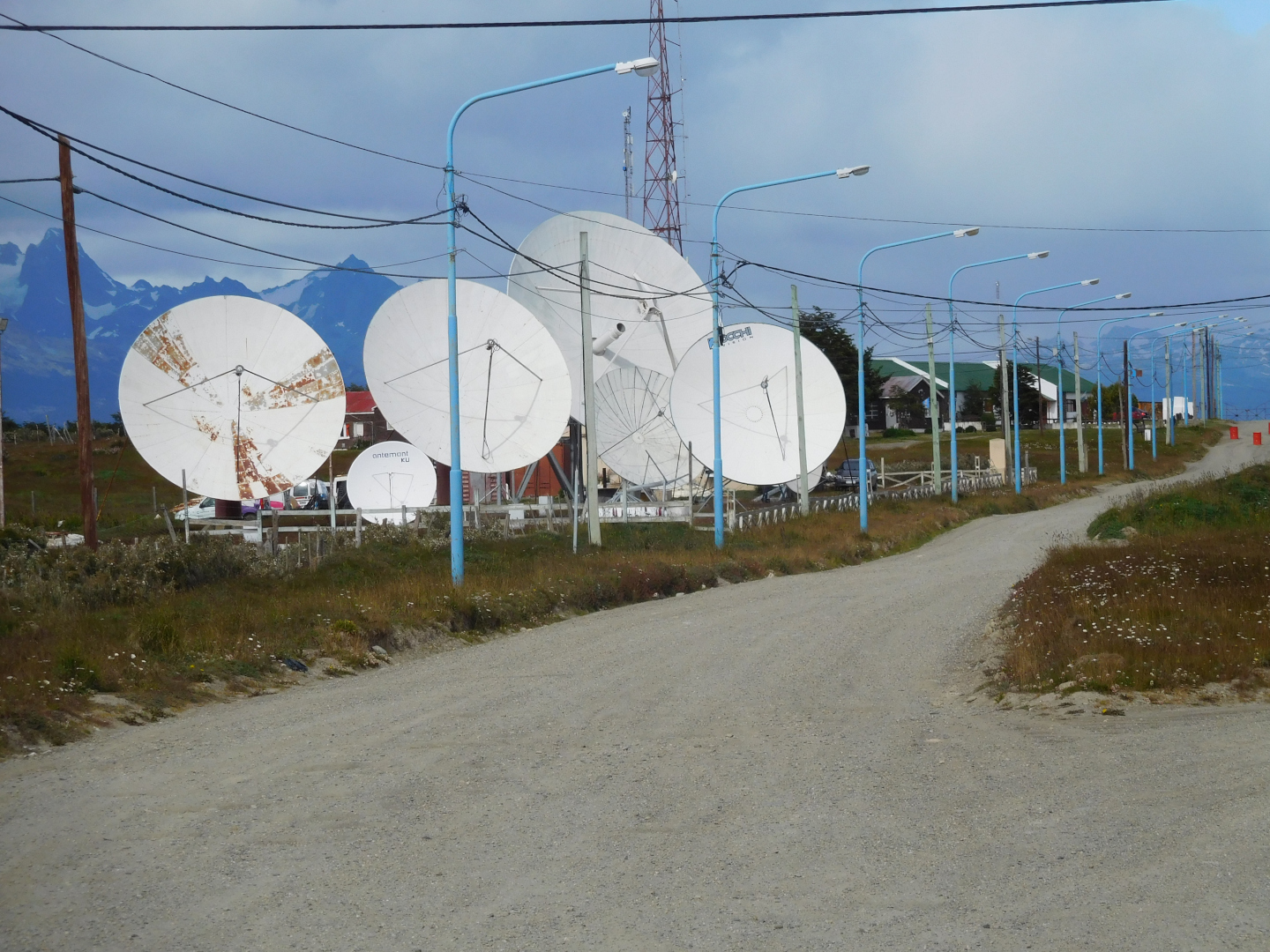
Also, I spotted what seems to be a large Amateur radio station near the outskirts of the the town (see in Google street view). I haven’t identified the owner, but there shouldn’t be many Amateur operators in Ushuaia.
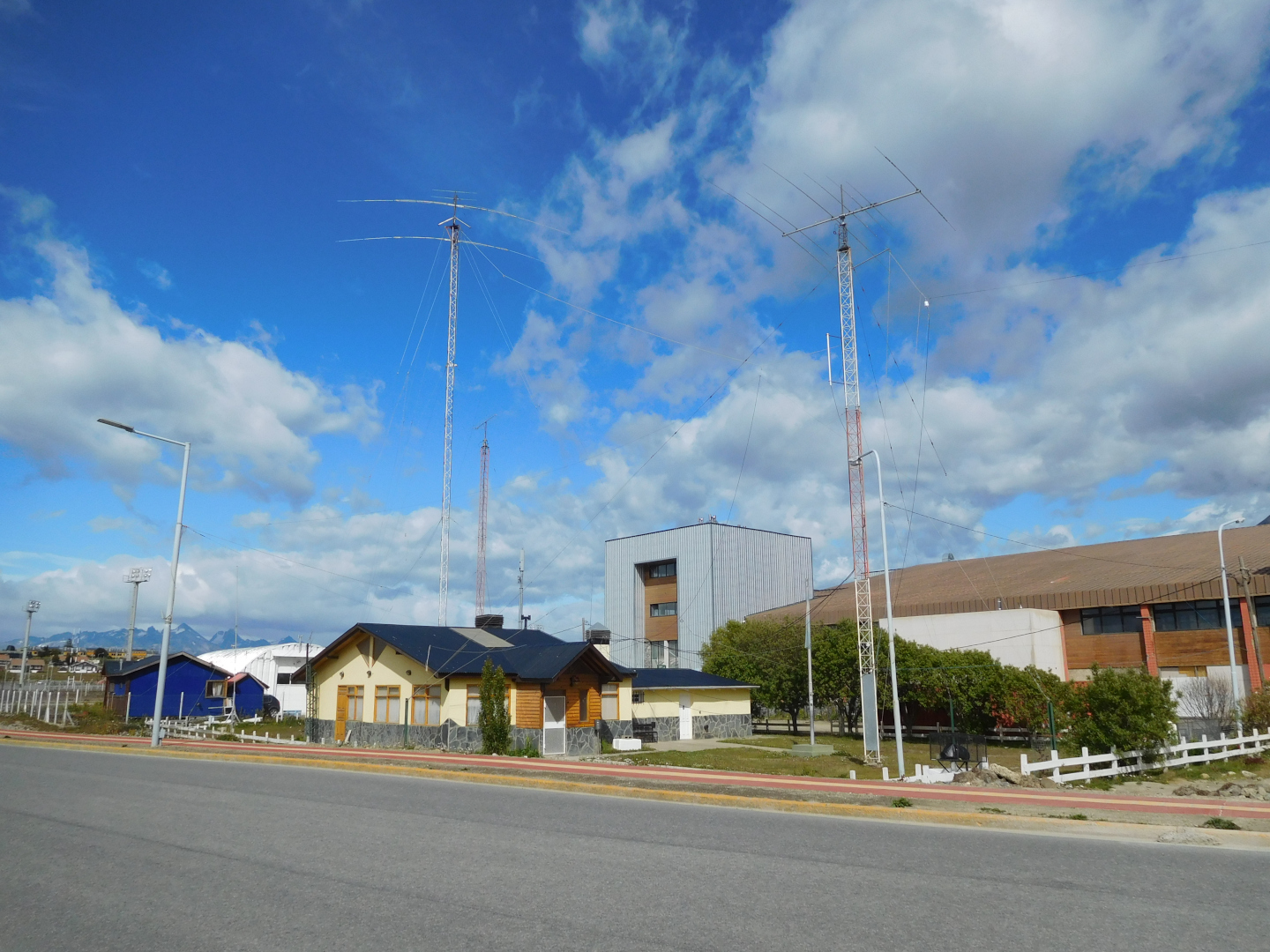
On January 17 the Hespérides arrived to the docks, and we embarked and departed towards the Antarctic Peninsula on the 19th. The ship is the red and white ship marked A33 in the picture below.
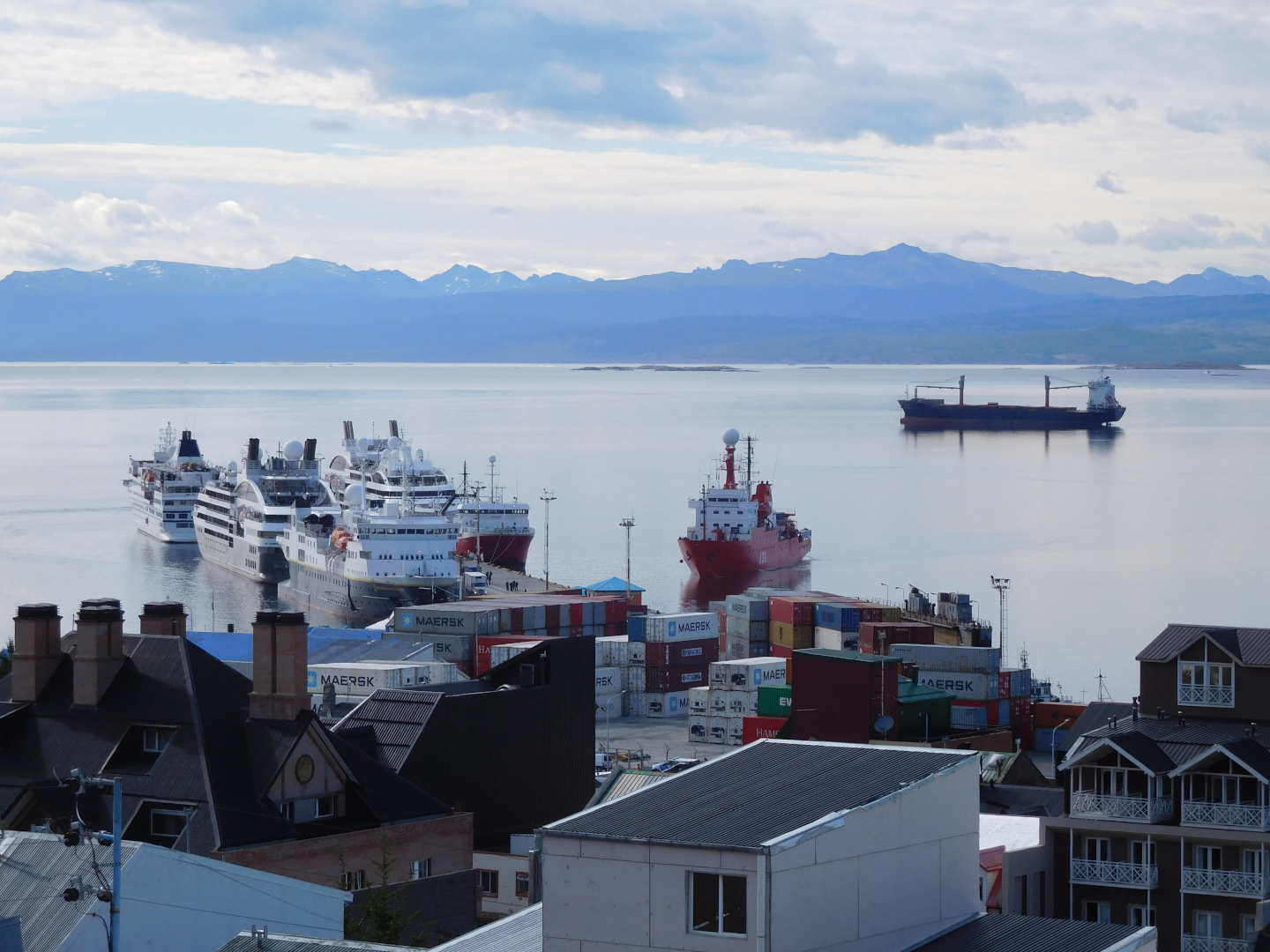
The Hespérides
The Hespérides is a Spanish oceanographic research ship operated by the Spanish Navy. It can host a maximum of 37 scientists and technicians, in addition to its crew of 57. It has several instruments to perform bathymetry and to study different parameters of the air and water, as well as several labs equipped for biology and other disciplines.
The ship supports the Spanish scientific activities in Antarctica. It provides logistics to the two Spanish bases in the South Shetland Islands: Gabriel de Castilla, in Deception Island, and Juan Carlos I, in Livingstone Island, and to the Byers camp, also in Livingstone Island. It also carries scientists to different locations in the Antarctic peninsula to perform samplings on ground, in addition to performing bathymetry, underwater seismology, and other marine research on Antarctic waters. The only other Spanish scientific ship that operates in Antarctica is the Sarmiento de Gamboa.
You can read a more detailed description of the ship here. It is also very interesting to look at the real time parameters, which shows the current position of the ship, together with the meteorology and water data.
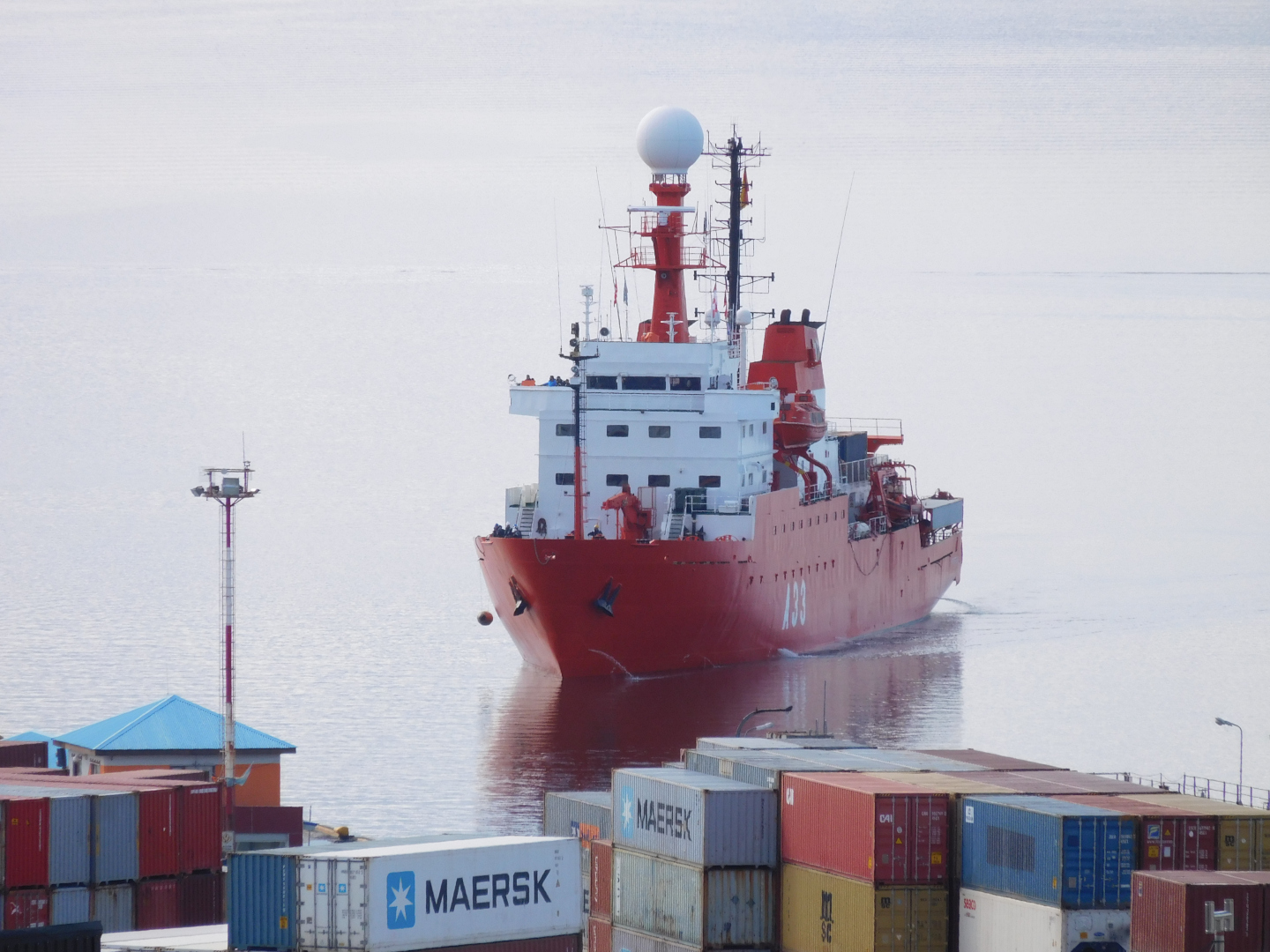
Regarding communications, every ship has a handful of them. The Hespérides has a small radio room crammed with equipment covering from LF to satellite microwave, with both old and new racks of radios. People in the navy say that cabling is never removed from a ship, only newer cabling is installed on top of the older one. It seems that it happens the same with some pieces of equipment, which might appeart to be museum gear, but still work and get some sporadic use.
One of the most important radio systems in the marine environment is the marine VHF band. This is the primary method for ship to ship direct communications. All ships are required to maintain watch on channel 16 (156.800MHz), which is the emergency channel, and is also used as a calling channel.
In the Hespérides, the marine VHF band is also used to coordinate all the boating activities with the Zodiac inflatable boats. These boats are used to move personnel and cargo between the ship and ground, since there are no docks at most places in Antarctica. The skipper of the inflatable boats always carries a marine VHF handheld, as do some of the crew on the deck of the Hespérides. Of course, there is also a station on the ship’s bridge.
By extension, marine VHF is also used by the scientist teams on ground and by the Antarctic bases for most of the activities where a handheld of some sorts is required, even if not directly related with marine activities.
The Hespérides uses channel 72 (156.625MHz) for communication with the inflatable boats and scientific teams. I used my Yaesu FT2D on the marine band for communication with the ship and other teams when I went on ground with my team, and also to be informed about all the details regarding the manoeuvres when staying on the ship, since only important announcements are given over the ship’s PA system.
The communication procedures (calling other stations, performing signal checks and reports, etc.) used by the military are slightly different from those used in Amateur radio, but it is quite easy to get used to it and do it in the same way as them. The callsign of the Hespérides is EBBW, and the bridge normally identifies itself as Bravo Whiskey. The bridge coordinates all the activities and also serves as a relay between mobile stations when they don’t have direct communication. The other units (the inflatable boats, for instance), have their own invented “nickname-callsign”, and scientific teams typically use the name of their project as callsign.
On board the Hespérides, for most communications between crew which don’t involve boating operations, digital handhelds are used. I think they are DMR, but I didn’t see them well, so they might also be dPMR. The ship has an internal telephone system, but this isn’t practical when you are moving through the ship or when you are working on the deck, so the digital handhelds are used for this.
Another interesting piece of equipment is the satellite internet. This is provided by the navy and consists of an X band system through the Spainsat GEO. The ship has large radome (the white sphere on top of the ship) which houses a dish with an automatic pointing system. This is not a simple system, since below the Antarctic polar circle the elevation of the GEO is very low (around 5º) and the radome mast can move quite a bit in rough seas. Once the system is locked to the signal, it maintains pointing automatically, but if the system loses lock, it can be quite tricky to get it back on lock manually if the sea is not calm.
There are two modems providing 1024kbps links through satellite. One of the links is used by the navy, and the other one is used by the scientists. The other end of the link is in the Spanish Ministry of Defense in Madrid. It is fun to see that if you go to whatismyip.com, you’ll see that your IP is allocated to the Ministry of Defense (and of course all the ship is behind NAT).
Iridium is another important radio system, since it gives phone-like communications under almost all conditions. It can be used to receive important calls and to dial to Antarctic bases for planning before arrival. There are also a few Iridium handhelds on board that can be given to teams that are expected to go on ground out of VHF coverage (although this is not very usual). Finally, it can also be used to dial Madrid when the satellite X band link fails, in order to get it fixed (usually there is a direct connection to the Spanish telephone system through the satellite link).
Finally, there is quite interesting HF equipment in the radio room of the Hespérides. Bulky and old equipment with the transmitter and receiver separate and a tube amplifier, and also a newer solid state transceiver. Everything is one kilowatt or more and built with redundancy in mind. The antenna system consists of several long verticals anchored at different points along the ship. In the image above, you can see one on the port side of the chimney, and two on a mast in the forecastle. There is a switchboard matrix where each antenna can be routed to each amplifier or receiver. The HF equipment is not used often, and kept for emergencies.
South Shetlands and Marguerite Bay
After departing from Ushuaia, the Hespérides crossed the sea of Hoces. This is usually called the Drake passage in English, but the Spanish navy defends that it should be called sea of Hoces in hounour of Francisco de Hoces, who discovered the passage 53 years before Sir Francis Drake. There are often rough seas here. I our case it wasn’t too bad: only 4 metres of waves and the Hespérides banking up to 20º.

The first part of the campaign was devoted to logistics in the Shetland Islands. We stopped first in Byers camp to recover all the scientists and some material in order to close the camp temporarily (until the next batch of people, which arrived a couple weeks later). Then we went to Juan Carlos I base in Livingstone Island for logistics and to drop scientists, passing then through Elephant Point to do some scientific sampling, and after this to Gabriel de Castilla to exchange personnel and material.
Sampling is performed by the scientists on board the Hespérides at several locations on ground. The ship stops near the shore (usually between 1 and 2km away) and the personnel is disembarked on inflatable boats, together with the equipment they need. The sampling activity lasts a few hours (usually between one and six), and when it is finished, everything is returned to the ship, which then sails away. This is an interesting activity. The cartography for many zones is not perfect, so the ship can’t get too close to the shore and the landing zone is often not seen at first glance. Disembarking can also be challenging sometimes, depending on the conditions at sea, the presence of rocks, the tides, etc.
After Gabriel de Castilla, we returned to Juan Carlos I for more logistics and also to deliver material for an Urugayan base to the ROU Vanguardia. After this, we had to return to Gabriel de Castilla to recover some scientific equipment that had been mislaid. Then we set off for the south.
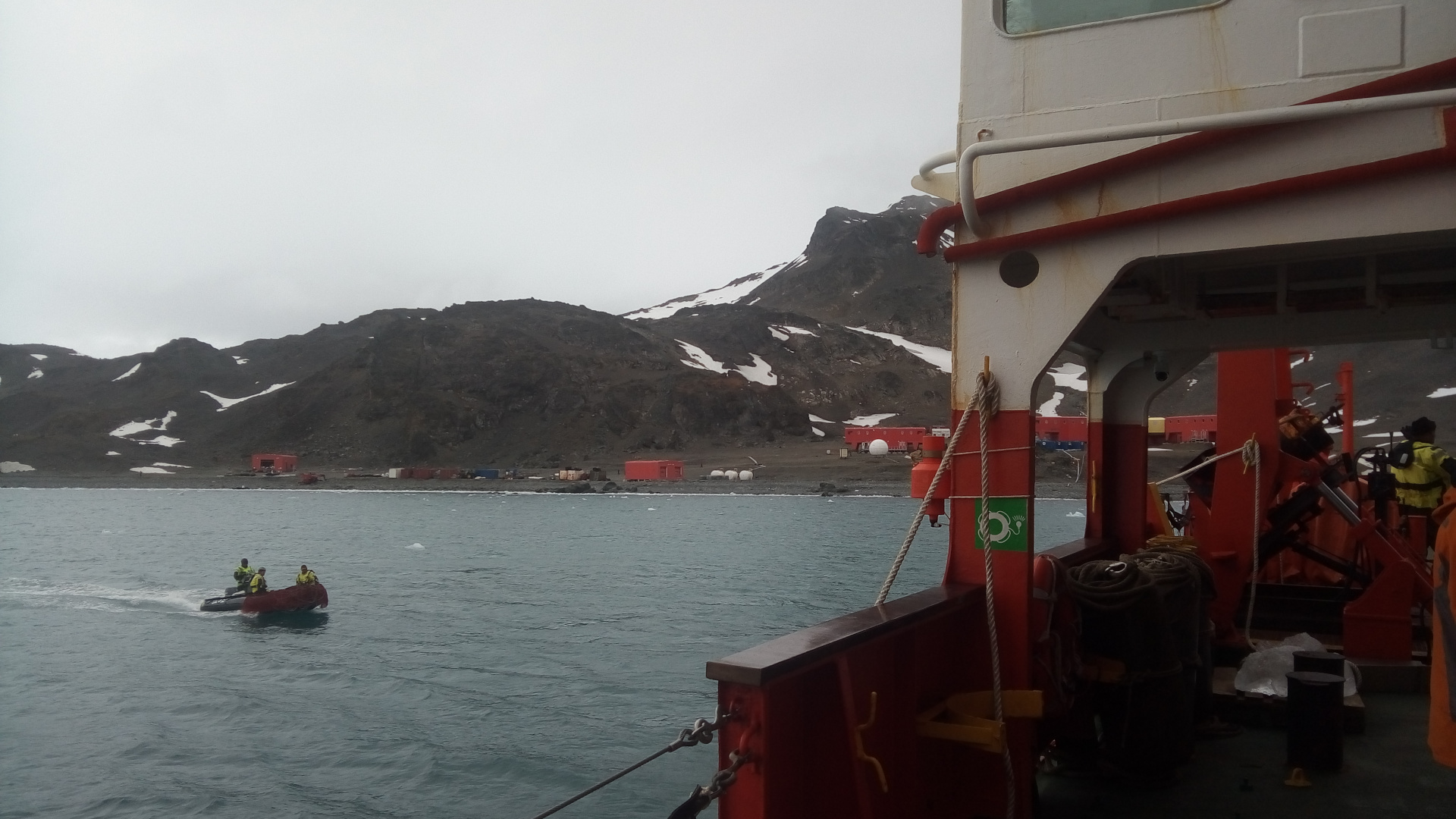
The whole track of this part of the trip can be seen in the map below. The corresponding GPX file can be downloaded here. This file contains a GPS position every minute. It is derived from the ship’s oceanographic data acquisition service, which contains one position per second. I have reduced the number of points to reduce the size of the file. If someone is interested in all the data (or the oceanic data), I can share it. The length of the track is 3469.66km, covered in 13 days.
After departing from Deception Island, we stopped by Cierva Cove, in the Antarctic Peninsula. The Argentinian Primavera Base is located there. We had to drop some scientific personnel at this base and also do some sampling.
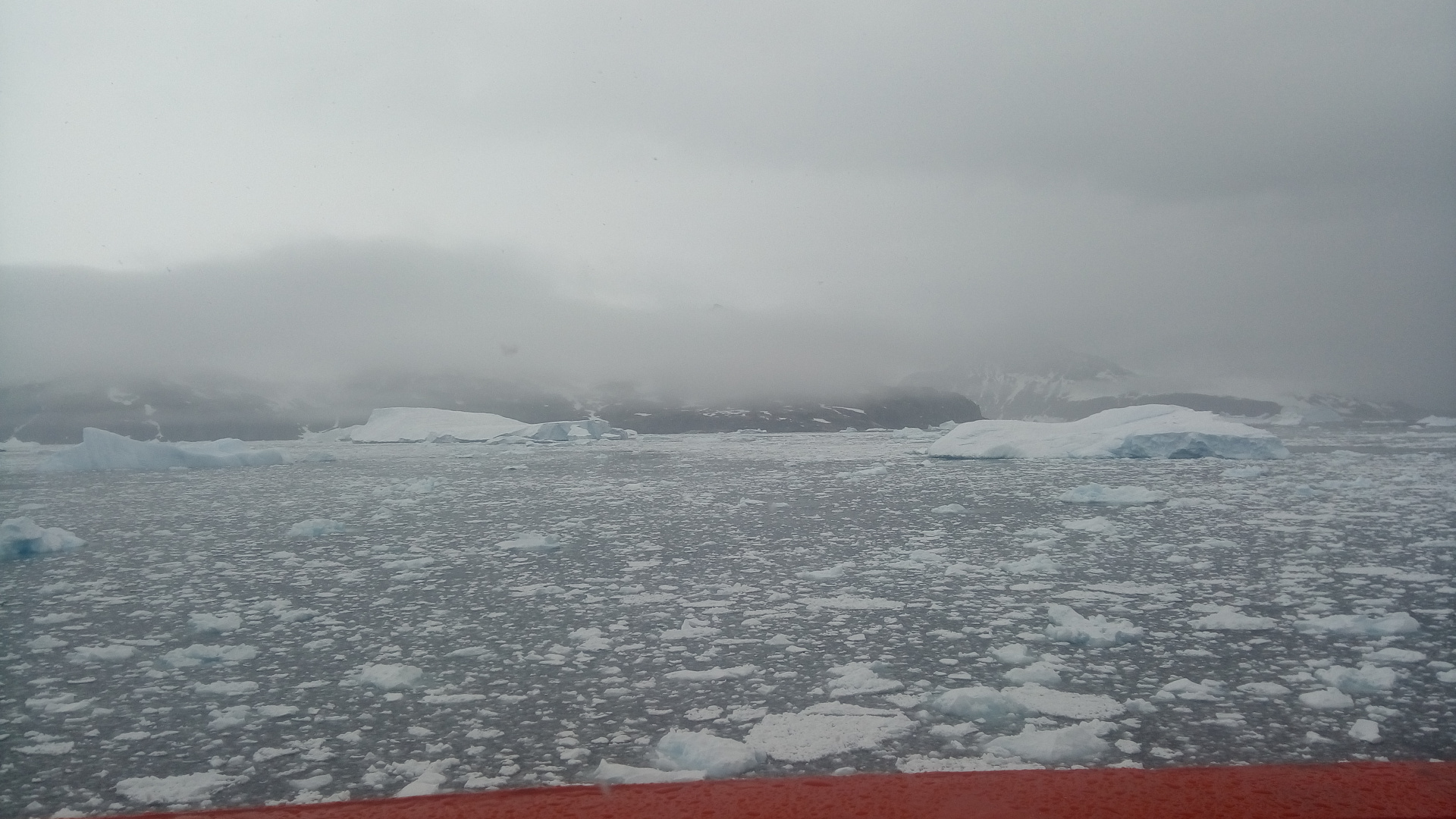
Then we set off for Marguerite bay, crossing the Gerlache Strait and the polar circle, briefly stopping there to take some ice samples. The Hespérides doesn’t sail this far south every year. Often it limits itself to the South Shetlands and only goes as south as Cierva Cove, depending on the scientific needs of each campaign. This year there were scheduled several samplings around Marguerite bay, so this was kind of a novelty.
Since more than one month had passed since the solstice, the sun set for a few hours even below the polar circle. However, the sunsets were very slow and the people on guard at the bridge told us that twilight persisted throughout the whole night.
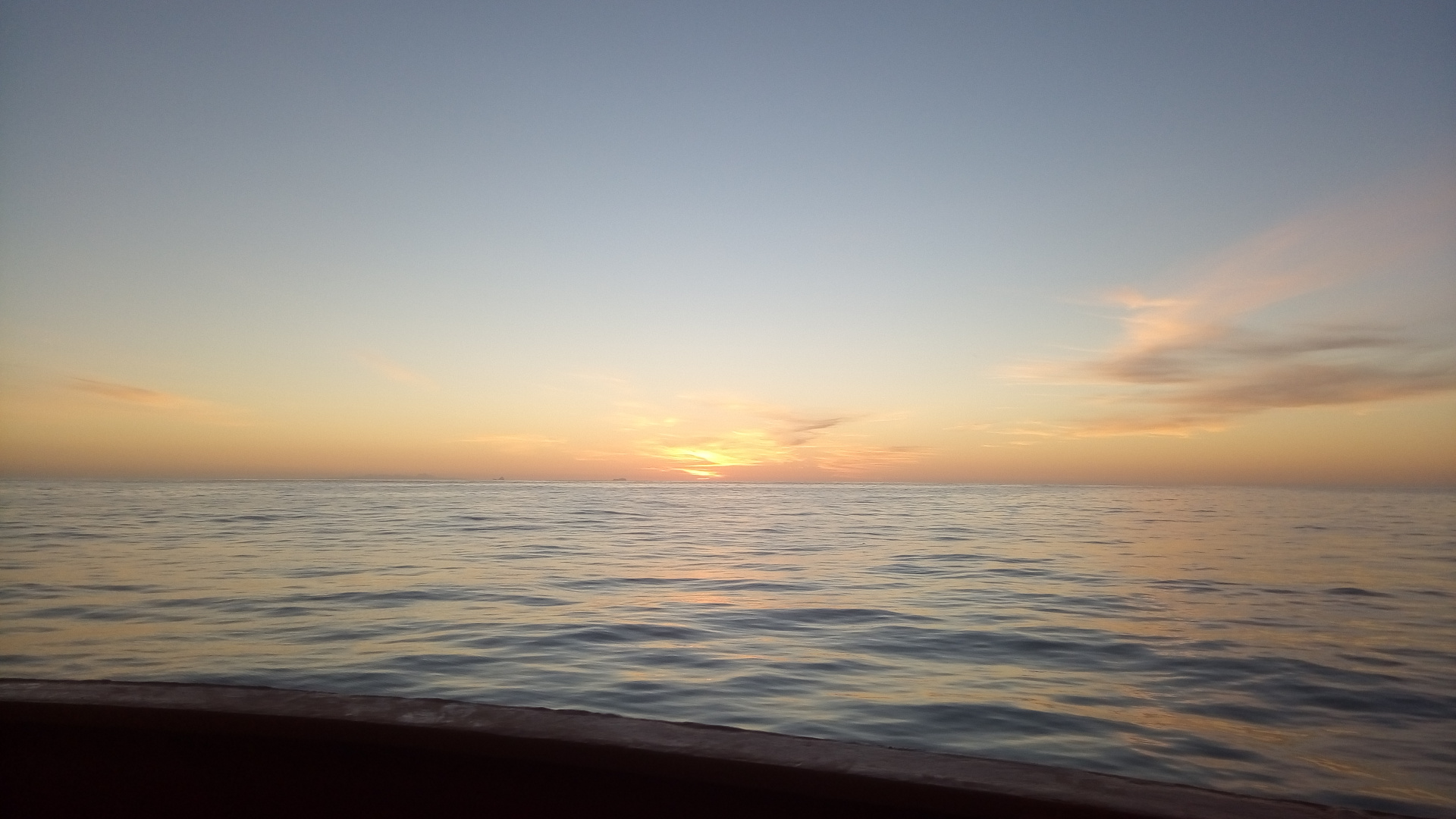
After arriving to Marguerite bay, we went to Horseshoe Island and Lagotellerie Island for some sampling. The ship went further south to cross the 68ºS parallel just for fun (I was actually on Lagotellerie when this happened). During the night, we stopped for sampling at Lagoon Island and Léonie Island. Next we went to visit the UK Rothera Research Station.
Rothera is a large station featuring a dock (currently under remodeling to be able to house the future icebreaker RRS Sir David Attenborough), and a gravel airfield. The airfield operates some de Havilland Canada Twin Otters and a Dash 7. These give the British Antarctic Survey programme a lot of mobility, being able to land on glaciers and on the ice sheet.
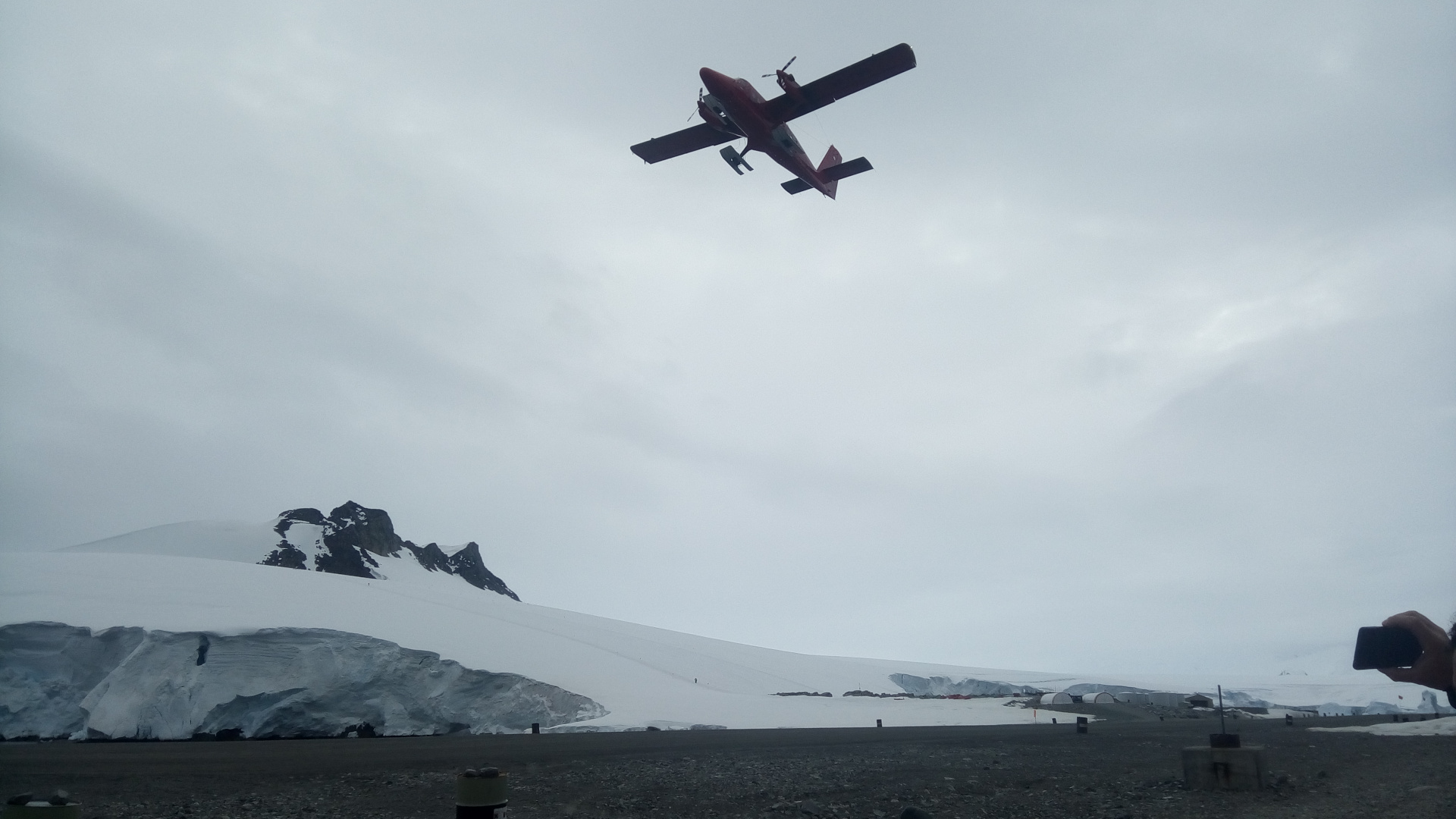
All operations around the station are coordinated by a control center, which also serves as a sort of control tower for the airfield. The staff and scientists carry a marine VHF handheld, normally used on channel 1 (156.000MHz, simplex). Many of the movements around the base require communications on this channel: informing of whereabouts and intentions, asking for permission to cross the runway, etc. There is also a field of HF wire antennas, most of them conical dipoles
After departing from Rothera, we went to Avian island to perform some sampling. This finished our journey around Marguerite bay, so we departed north, crossing the polar circle again. Then we went to Biscoe point for some sampling, entered the Neumayer Channel and stopped at Damoy point for sampling and Port Lockroy to visit the museum.
We continued north to Cierva Cove to pick up some scientists in Primavera Base and do some sampling. One of these scientists was Pedro Almeida, from Portugal. He is an Amateur operator, and I had met him at the beginning of the journey, when we crossed the sea of Hoces and we left him at Primavera base. He told me that the base officer is also an Amateur operator.
I asked him about the antennas on the base. There is a very large antenna wire that goes many metres up the slope of the mountain, which I had seen while sampling on Cierva Cove, together with its ladder line feeder. He told me that this is a rhombic antenna for the lower bands. Pedro told me that this antenna even goes down to the shore. There is also a dipole for the 20m band, and Pedro tried to use it to do some QSOs with South America, but the propagation was very poor.
After departing from Cierva Cove, we went to Deception Island, arriving there on January 31. A few of us where left there at the Spanish base. This was unplanned, but it happened that the Pedro Duque, the Spanish minister of science, was coming to inaugurate some new buildings in the Juan Carlos I base, and to visit the other Spanish facilities in Antarctica. The Hespérides was to transport he and his team from the Teniente R. Marsh Airport to the bases, but there was not enough room for them on board. Thus, a few of the scientists had to be accommodated at the Spanish bases during the visit, so as to leave room on the ship.
Regarding my tests with LTE and TETRA, I can say that in general they worked rather well. LTE required a clear line of sight with the ship, and quickly broke off if the ship went behind terrain. TETRA was slightly more tolerant, allowing for some small non-line of sight situations. I must say that the conditions we usually tested were rather easy. The ship was between 1 and 2km away, the sea was usually calm, and we tried to put ourselves at some elevated terrain (10 or 20m) near the shore, so the Fresnel zone was mostly clean. In this circumstances we could achieve a sustained net rate of 5.5MB/s on the uplink most of the time. On the other hand, I found out that my TETRA handheld lost connection with the base station on the ship on a couple unusual situations. One of them was right on the shoreline in Elephant Point, with the ship perfectly in view. Perhaps this was caused by some odd propagation near the water (maybe involving ducting). In the same conditions, the marine VHF handhelds worked beautifully, and tolerated worse non-line of sight conditions. The only time we lost VHF connection with the ship is when it left us at Lagotellerie Island and went off to cross the 68ºS parallel, hiding itself quickly behind the mountainous island.
Deception Island
While stationed in the Gabriel de Castilla base in Deception Island, we made a few excursions, accompanying the scientists that had to take samples around the island. Since I carried my FM handheld literally everywhere, I have the tracks of these excursions recorded with the GPS of the handheld.
Transportation in Deception Island is either by foot, by Zodiac across the interior lagoon (also known as Port Foster), or a combination of both. The areas of the island harder to reach from the base are those which are on the outside border of the island, on the opposite part of the lagoon. To reach there, one must cross the lagoon by Zodiac and then travel by foot to the exterior shore, crossing the very mountainous terrain. The Zodiac cannot go outside of the interior lagoon, due to the usual rough seas, which also make landing on the exterior shore especially difficult.
On February 2 we made a short hike to Irizar lake. The total distance was 4.25km, walked in 1 hour and 27 minutes. The GPX track can be downloaded here and is shown on the map below.

On February 4 we went to a penguin colony on the exterior of the island. This colony is a usual object of study for penguinologists on the base, although the hike is not so short. On our way back we made a visit to Fumarole bay. As it name implies, there are several small fumaroles there, since the island is an active volcano. The total distance was 14.46km, walked in 4 hours and 48 minutes. The GPX track can be downloaded here and is shown on the map below.
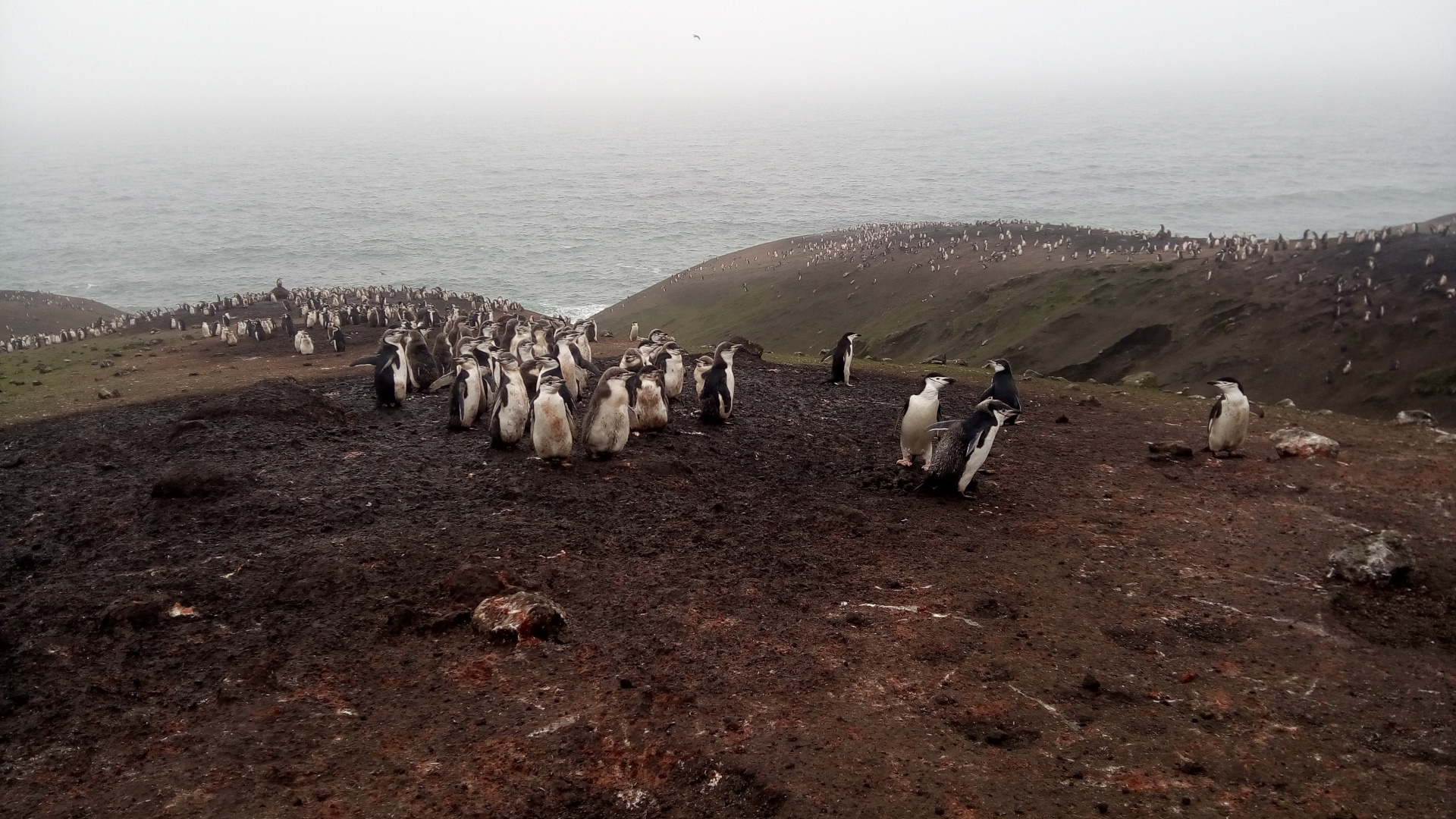
On the afternoon of February 4 we did a Zodiac tour around the interior lagoon. We saw a black glacier (it is black because of the volcanic ash), Whalers Bay (where we also landed and had a small walk), and some solidified lava from an eruption of the volcano. The total distance was 24.57km, and the tour lasted 1 hour and 29 minutes. The speed of the Zodiac was between 30 and 35km/h. The GPX track can be downloaded here and is shown on the map below.
There is something rather interesting in the GPS track shown above. If you look closely at the approach to the black glacier (shown in light blue on the map), you’ll see that it seems that we went inside the glacier. Of course this is impossible. We were on the Zodiac, at 10 or 20m from the glacier wall.
This seems to be a really good example of non-line-of-sight GPS signals. The signals from the satellites to the southwest didn’t arrive directly, but rather via a reflection on the glacier wall. This makes the receiver compute a too large distance to these satellites, pushing the computed position towards the northeast and into the glacier wall.
On February 7 we went to Cerro caliente (a hill with patches of very hot terrain), and also to Fumarole bay. This was a 8.11km hike done in 2 hours and 7 minutes. The GPX track can be downloaded here and is shown on the map below.
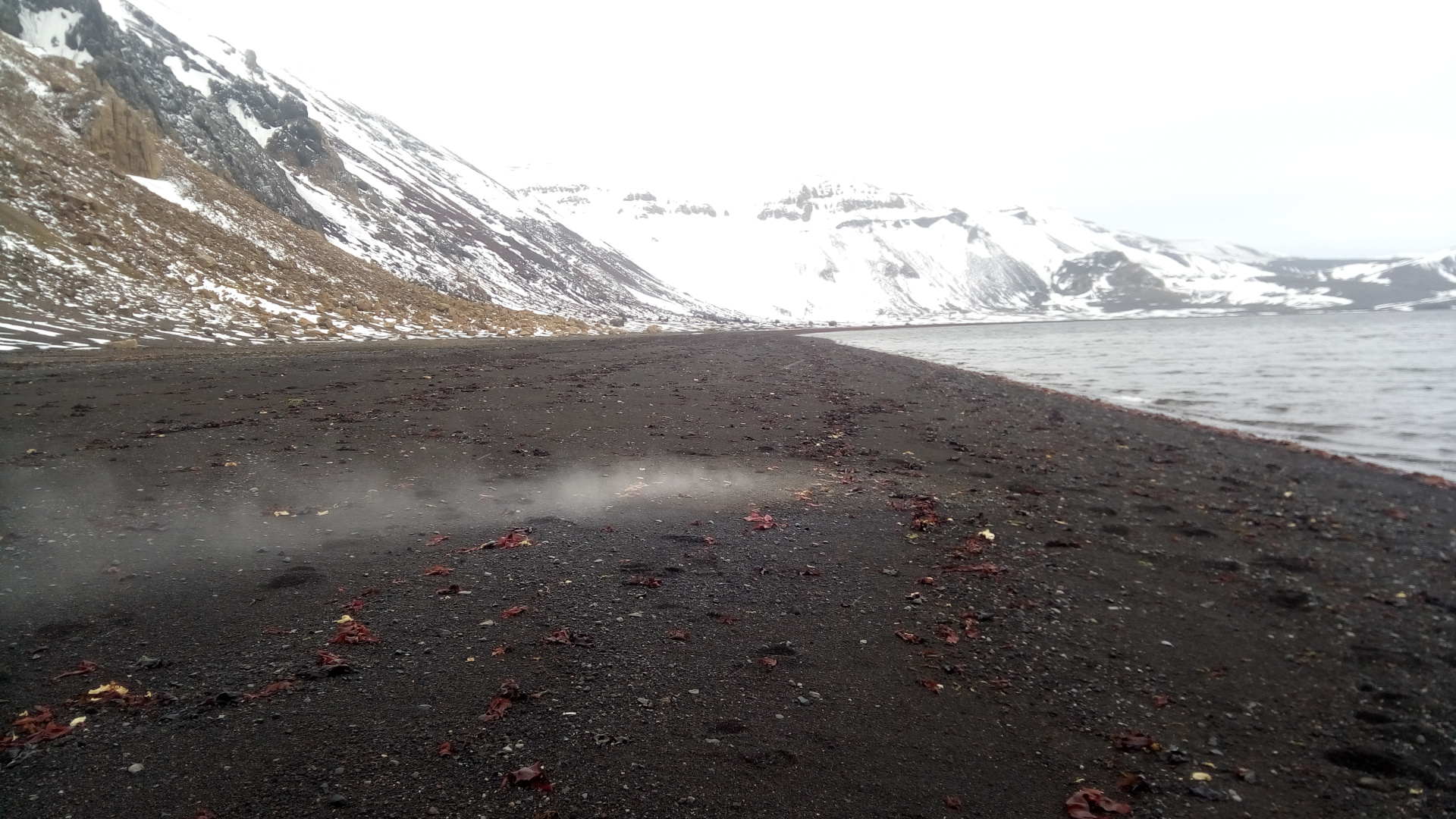
The last GPS track shows our departure from Deception Island. We were taken to the Hespérides by Zodiac and then departed the island on board the Hespérides. Most of the time that I was in the Hespérides, I was standing on the deck, watching the views.
A very impressive GPS non-line-of-sight can also be seen as we exited the lagoon through Neptune’s Bellows. As you can see, the track goes into the land on the north of the passage. I was standing on the port side deck, with the south completely blocked by the ship, so the signal from the satellites towards the south was arriving by reflection onto the northern wall of the passage, throwing the position towards the north and inside the wall.
The GPX track can be downloaded here and is shown on the map below.
Besides the excursions, I took the opportunity to try to make some satellite contacts with my FM handheld. I only had the stock rubber ducky antenna, so this was challenging: making contacts in half-duplex with an inefficient antenna is not so easy. I first made some tests to determine which satellites I could work reliably. The only active FM satellites were SO-50, AO-91 and AO-92.
As expected, I checked that SO-50 was too weak for me to hear it with this antenna at low elevations. The downlink of this satellite is only 300mW or so in the 435MHz band. On the other hand, I could hear reliably AO-91 and AO-92, which use nearly 1W in the 145MHz band. Also, I could open the squelch of these satellites without much difficulties with my 5W signal. To check this, it helps a lot the fact that the squelch stays open for a couple minutes even if the uplink stops.
Thus, I decided to work only AO-91 and AO-92. These two satellites are on a polar orbit, so some of the passes go straight overhead Deception Island, moving north into South America (or the other way around for southbound passes). These are the good passes to work, but even on these passes the common window with the densely populated areas in Chile, Argentina and Uruguay (which are at 3000km from Deception Island) last only a few minutes.
These overhead passes happened around (localtime) noon and midnight, so I tried to work each of the noon overhead passes (one per satellite each day) when the schedule didn’t conflict with my other activities.
When the news that I was active from Antarctica spread, lots of people started trying to contact me, making it much more difficult for me to do any contacts, due to the large pile-up and bad operating practices. I posted a few operating tips (call only once, don’t come back if I’m not answering to your callsign, etc.) in a rather popular Whatsapp group for South American satellite operators, but this didn’t help much.
In the end, I managed to make a total of 5 contacts, in Chile, Argentina and Uruguay, at distances between 3000 and 3500km. These are shown in the map below. My location is shown in red, stations worked on AO-91 are shown in blue and stations worked on AO-92 are shown in green.
I am grateful for all the attention given to my short and informal satellite activation from Deception Island, and at the same time I’m sorry that I couldn’t work more people due to the difficulties encountered.
Another activity related to Amateur radio that I did on Deception Island was to collaborate with the Permasnow project. This project studies the evolution of the permafrost on the island. They have temperature and humidity sensors installed at several permafrost fields. One of the members of the project is an Amateur operator, Manuel Prieto EA4FZR, so he has installed some Amateur radio system to collect data from the sensors automatically instead of having to walk to the sensors to copy the data manually. Manuel gave a talk about these systems in STARcon last year, so I suggest you watch the recording of his talk for more background information.
The sensors broadcast the data every hour using APRS, and there is an APRS receiver at the Gabriel de Castilla base which receives the data from all the sensors. The data is then sent to Universidad de Alcalá de Henares using the satellite internet on the base, where it can be analyzed. Unfortunately, it isn’t sent to the APRS-IS network yet, but this is planned.
The satellite internet only works during summertime, when the base is open. For the wintertime, Manuel is looking at solutions involving sending the data directly to Spain by HF. Currently, he has a beacon that transmits every hour some FT8 on the 40m band. The transmitter uses a small magnetic loop antenna. To prevent interference from other signals in the usual very crowded 40m FT8 frequency, another frequency is used to transmit. Manuel is currently using 7074kHz LSB.
Manuel’s idea is to evaluate how well this FT8 beacon works, and use it in the future to transmit some of the permafrost data. I think that rather than insisting on receiving this from Spain, where you would need some rather good propagation, perhaps using the grayline, it is more interesting to try to receive it from South America, where it is easier. I understand that QSOs in 40m between some of the Antarctic bases in the South Shetlands (such as those in King George Island) are not uncommon.
Since my Yaesu FT2D handheld has APRS built-in, I could decode the APRS transmissions from the permafrost sensors, as shown in this tweet. In fact, I could even see the temperatures in my handheld, because they are transmitted in plain text on the comment field of the APRS packet.
Manuel couldn’t make it to Antarctica this year, but one of his colleagues was in Deception Island and I stayed in contact with Manuel through Whatsapp. I helped Manuel to test his Amateur radio systems.
First, we did some tests with the APRS. When I arrived to Deception, the system was using the marine VHF channel 16, since Manuel’s colleague only had a marine VHF handheld, and so he had no way of telling if the sensors were transmitting if they used Amateur frequencies. After my arrival, I confirmed that the sensors were transmitting and the data was good, and the system was switched to 144.800MHz, which is the APRS frequency in Europe.
I helped Manuel to test the coverage of his APRS receiver on the base by beaconing with my handheld during my excursions. He determined that the coverage wasn’t great, perhaps due to interference on the 2m band, and decided to switch to the 70cm band. Thus, we switched all the system to 434.800MHz and I performed more beaconing tests.
Manuel also suspected that, for some reason, his FT8 beacon wasn’t transmitting. I confirmed this by listening to 7075kHz in AM mode, where I should hear the squelch open and a dead carrier if an FT8 transmission went on. Unfortunately, the FT8 beacon indeed didn’t transmit, and it couldn’t be fixed by the time we left the island.
Besides the Amateur radio systems of the Permasnow project, there are some other interesting radio systems that I think it is worth mentioning. The primary method of communication between people on the base is DMR. Gabriel de Castilla is operated by the Spanish Army, and there are two DMR repeaters installed on hills in the island. Every team leaving the base to perform scientific or technical activities around the island is required to take a DMR handheld with them to stay in contact with the base.
I visited one of these DMR repeaters on my excursion to Cerro Caliente. It is installed on a mast at the middle of the slope leading up to Cerro Caliente, where it has a good view of the base and most of the island. An Ubiquiti WiFi is used to link the repeater to the base.

The repeater equipment itself is installed in crates on the ground.

Power comes from a gasoline generator that is installed on the base of the hill, where it could be carried by quad bike (this also eases refueling). A rather long cable runs uphill to the repeater.
The picture below shows the view from the repeater site towards the Gabriel de Castilla base. The large buildings on the front are the Argentinian base. Gabriel de Castilla is farther, near the shore.
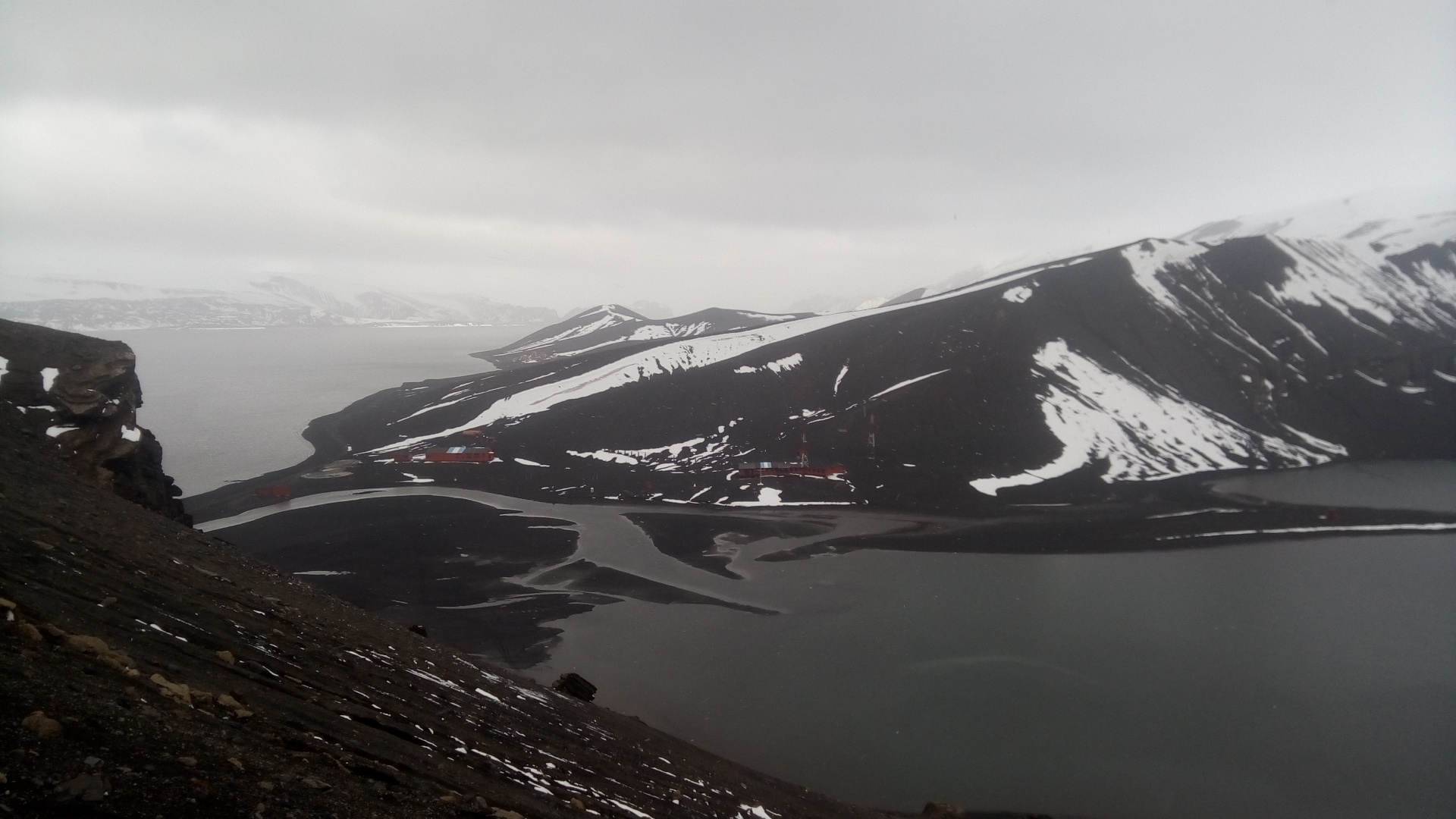
Besides carrying one of the DMR handhelds sometimes, I also carried my FM handheld all the time, usually listening to channel 16 in maritime VHF. Deception is a rather touristic site, so it is common to hear tourists ships calling “securité” on the frequency. Gabriel de Castilla uses channel 14 (156.700MHz) to communicate with support ships, such as the Hespérides and the Sarmiento de Gamboa, so I also listened to the operations whenever one of these ships arrived.
Iridium is also used at the base. Teams expecting to go outside of the DMR coverage can take an Iridium handheld with them.
Gabriel de Castilla has a really good internet access. Similarly to the Hespérides, the satellite link is provided by the Spanish Ministry of Defense and done through the Spainsat GEO. However, there is 8Mbit of downlink using K band, and 1Mbit of uplink using X band. Different dishes are used for the uplink and the downlink, and if I recall correctly they are 1.8m. The dishes are installed inside large radomes, which can be seen in this image by Google street view. They are the large white things next to the building (they seem vats instead of radomes).
As I mentioned, satellite internet is only available during the summer, when the base is open. The satellite equipment runs off the generator, as most of the equipment at the base. When the base is closed for wintertime, the generators are shut down and only a few systems remain running on solar panels. There is a system to send scientific data back to Spain during the wintertime using a satellite link. You can read some information (in Spanish) about it here.
We departed Deception Island on the morning of February 8. The Hespérides took us to Juan Carlos I for some logistics and then to Byers to reopen the camp. After this, we sailed to Punta Arenas, in Chile, through a rather calm sea of Hoces. This return trip can be seen in the map below. The GPX track can be downloaded here.
This leg of the trip was 1678.49km long and took us 4.13 days. Thus, I sailed a total of 5148km (or 2780 nautical miles) with the Hespérides over the course of 17 days.
Chile
We arrived with the Hespérides to Punta Arenas on February 12. After a few days of stay there, we flew to Santiago on the 15th. Finally, we flew back to Madrid on the 17th.
I was able to get my temporary reciprocal Amateur radio licence for Chile with the help of the Radio Club de Chile CE3AA. Many thanks to the president, Dino CE3PG, and the secretary, Marisa CE2TM, for making the paperwork very easy for me. The licence was free and I could submit all the paperwork to the radio club by email from home. I recommend any Amateurs travelling to Chile to get in touch with the radio club to handle their licence paperwork.
Other than doing a some APRS and using the 2m and 70cm repeater CE3AA in Santiago, I didn’t do much Amateur radio in Chile. It was interesting to use the APRS frequency for Chile (144.390MHz), and to program the frequencies for the repeaters, which are rather unusual for someone used to operating in Europe. The 2m band on Region 2 goes up to 148MHz instead of 146MHz, so the repeaters are usually at 147 point something. The repeaters in the 70cm band use a 5MHz shift instead of the 7.8MHz shift which is usual in Europe.
In Santiago, I visited a science museum that had an interesting poster about the Atacama Submillimeter Telescope Experiment. This is a radiotelescope built in the Atacama desert. The dish is only 10m large, which doesn’t seem much until you realize that the surface is built to a precision of 19μm, to allow operation at 350GHz and up (indeed up to 3THz). The beam size at 350GHz is only 22 arc seconds. The poster can be seen below (in Spanish).
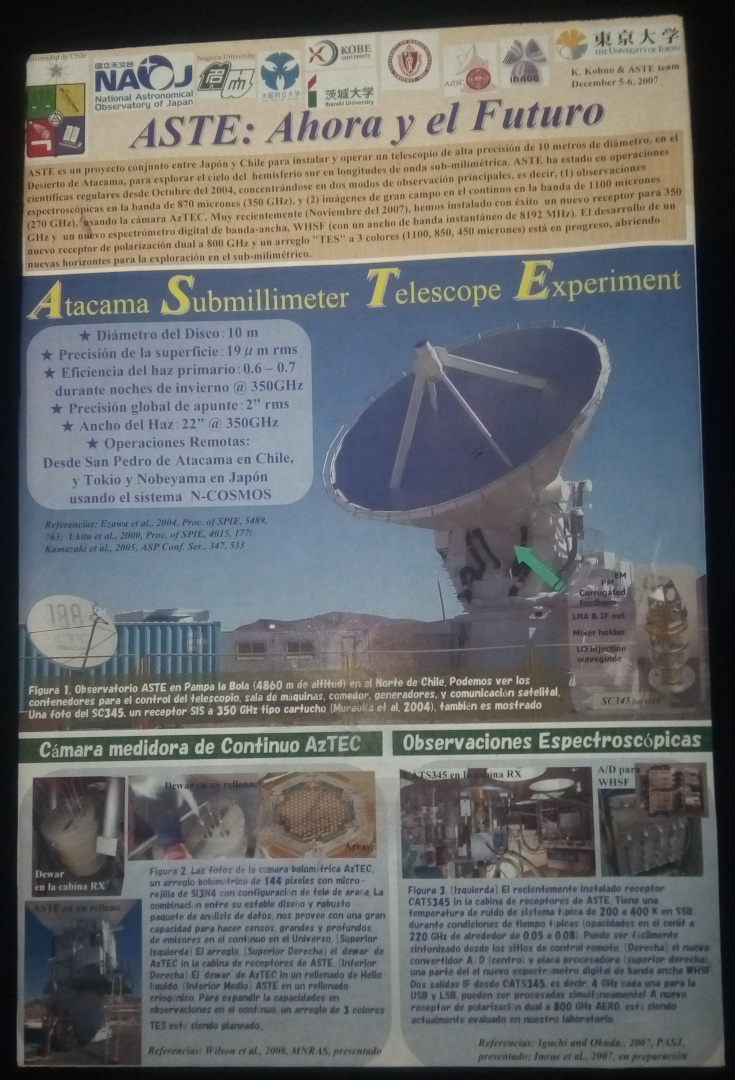

Wow! Wonderful write-up; thank you so much for all the detail. VERY interesting.
If you do write anything further about the trip, I would be interested to hear your comments about the COLD. It would also be interesting to hear your thoughts in regard to the food situation on-board ship, and at the other locations where you were operating.
Thanks!
Hi Scott,
The cold is not so bad as people imagine. In the areas we visited, the average temperature is around 0ºC in summer and -10ºC in winter (we went there in summer). Usually, it is above 0ºC during the day. If there is a strong wind (which is not unusual), the thermal sensation can be as low as -10ºC, but this is not very extreme.
The food both on board the ship and in Gabriel de Castilla is excellent. They are stocked with varied products and the cooks do a very good job. It is just like being in Spain. If I had to mention anything out of the ordinary, is that some fruits and vegetables don’t last more than a couple of weeks fresh. In any case, the ships bring new supplies to the bases every month or so. The ham is also excellent.
Waow! a very interesting trip!!!
The journey of a life, lucky man!
Congratulations!
There is one thing that surprises me: the use of tetra at 390 MHz in Region 2. Tetra usage at 390 MHz is an assignment exclusive of NATO european countries… in Europe… only.
Well, I guess I should not continue asking any more… 😉
Hi Miguel,
I don’t know the regulations very well, and they tend to get a bit blurry south of the parallel 60ºS, where the waters and land are covered by the Antarctic treaty. Basically (and this is probably missing some important details) it works as international waters, but I’m not sure you can speak about Region 2 being in effect there.
The TETRA and LTE system was subcontracted to another company, and I mentioned them that they should check the regulations with the Spanish administration. I don’t know if they did, but my conscience is clear regarding this matter.
We only used TETRA and LTE in Antarctica, not in Chile and Argentina.
Dear Dr. Estevez
Thank you for your contribution to the world and science. I have two questions regarding radio amateur satellites:
1. What handheld antennas are suitable for contacting amateur radio satellites?
2. What is the difference between FM repeater and transponder satellites? (Would you mind explaining to me, since I am new)
Best Regards
John
The third question
3. Is it possible to use SDRs such as HackRF instead of FM handheld to contact? What softwares should be used?
3. Yes, but you will need a power amplifier to get at least a couple watts of TX. You can use whatever SDR software you are most comfortable with. Using a software that handles Doppler correction automatically is a good choice.
Hi John,
1. It depends (handheld antenna vs. rotator, for example), but a short yagi is a usual choice.
2. An FM repeater satellite is just an FM repeater in space: it demodulates FM on its input frequency into audio, and remodulates the audio as FM onto its output frequency. A linear transponder satellite is a bent pipe: it translates a chunk of spectrum from its input into its output. An FM repeater supports only one simultaneous user using FM mode. A linear transponder can support several users in different modes (SSB is typical for voice contacts).